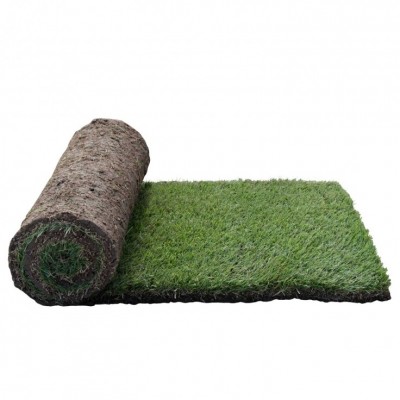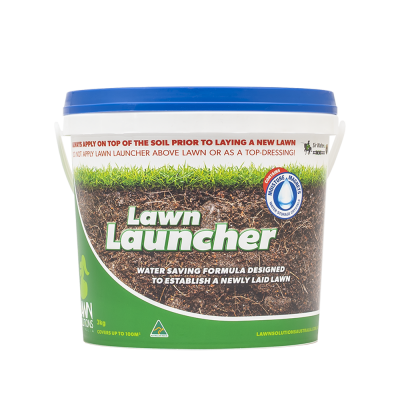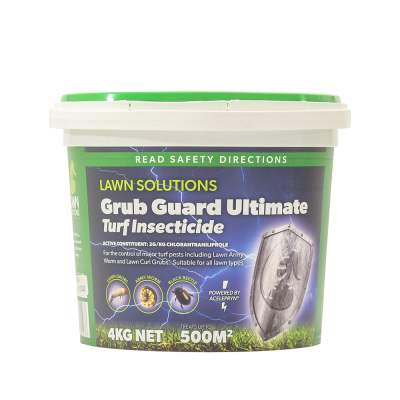When record flood waters inundated large parts of Victoria and southern NSW in late 2022, the focus in the immediate aftermath was on the thousands of homes, properties and businesses which were destroyed, and the mammoth task of rebuilding.
And rightly so. These floods were like nothing before seen in history – whole townships were underwater, homes were unliveable, families were displaced, businesses were closed indefinitely, and the recovery seemed insurmountable.
But as the months have passed, and communities continue to rebuild, our attention is slowly turning to other less obvious casualties of the natural disaster, such as our iconic public open space areas, sporting fields, and caravan parks.
How were they impacted, how have they recovered, and what lessons can we learn?
Coolabah Turf, located at Echuca, near some of the hardest hit communities, recently set out to seek some answers, investigating the impacts of floodwater on turf varieties in holiday parks, sporting ovals and open green spaces.
And what they found may go some way towards shaping how we attempt to flood-proof these spaces in the future.
Coolabah Turf Farm Manager David Geltch described the 2022 floods as an extreme event, and one which they expected would annihilate all turf varieties, given the extended periods of time in which they were submerged in deep flood water.
However, Mr Geltch said the surprising outcome was that some Lawn Solutions Australia turf varieties withstood up to six weeks underwater, and miraculously, recovered.
Echuca Case Studies
Campaspe Shire Council Turf Specialist, Ben Lloyd said he was impressed with and blown away by the resilience of TifTuf and its rate of recovery in two separate public space areas in Echuca which were submerged by flood waters for more than six weeks.
‘’We were absolutely amazed at how the TifTuf bounced back in the Echuca Kiosk/Riverboat Dock and Victoria Park Boat Ramp areas after the flood waters eventually subsided,’’ he said.
“Our parks team expected the turf to be totally obliterated given the length of time it was oxygen deprived and without sunlight, and we fully expected to have had to replace the surface.
“But within weeks of flood waters subsiding, we could see a tinge of green popping its head up through the film of silt that post-flood had covered the entire area.”
Mr Lloyd said his team’s resources were extremely stretched post-flood and they did not perform any sort of maintenance on the affected areas at the Echuca Kiosk/Riverboat Dock and Victoria Park Boat Ramp to assist in the turf’s recovery.
“The areas which have fully recovered are in a full sun environment, and the few areas which are still recovering are slower because of shade cast from the bridge structure, but we are confident it is happening,” he said.
An additional factor, not previously experienced in Mr Lloyd’s 13-plus years in the role at the council, was the destructive emergence of mites causing visible damage to the recovering turf area.
He said he had applied fortnightly applications of Thumper to treat the mites over a 12-week period.
“The softer stolen was definitely an invitation for the mites to burrow in and attack new growth,” he said.
“The flood waters and poor drainage in the area provided a prime swampy and moist environment for them to thrive.’’
Moama Case Studies
In Echuca’s twin town, Moama, on the NSW side of the Murray River, the community’s two most iconic public open space assets were heavily impacted by floodwater that took weeks to peak and then lingered for many months.
At Moama Beach, on the banks of the Murray, the turf (Eureka Premium VG Kikuyu) was underwater from the end of August until the beginning of December, with water levels reaching approximately 9m in depth. The damage to trees, infrastructure and amenities was significant, and the area sustained full turf loss, requiring complete replacement.
At Kerrabee Soundshell, Moama’s main public reserve for festivals, events and markets, almost half of the green space was underwater from October until early December, reaching a depth of approximately 1.5m. Assets and amenities were flooded with contaminated water and the turf (kikuyu) and landscape loss were significant.

Of the inundated area (approx. 1000m2), 90% of turf was lost, and there was only partial recovery of the remaining 10%, three to four weeks after the water receded.
Murray River Council, Manager Parks & Biosecurity Luke Keogh said with certainty both sites would flood again.
“What we’ve learnt is that the assets and infrastructure chosen for these sites need to be sustainable,” Mr Keogh said.
“Furniture needs to be removed pre-flood, and the landscaping should be minimal.
“The turf will need replacing depending on the flood event time, however good soil for the turf areas will reduce the post-event cost to restore.”
Mr Keogh said one thing was for sure, how unequivocally valued these two open space areas were by ratepayers in the community.
“The community is celebrating the reinstatement and usability of their local beach and park,” he said.
“Which as a council, reinforces for us that we are investing in the right areas of public infrastructure.”

Caravan Park Case Study – Moama
Moama Waters Holiday Park is home to acres upon acres of Eureka Premium VG Kikuyu turf supplied by Coolabah Turf and was chosen for its hardiness, dense growth, and fast recovery rate.
When the park was swamped with floodwater in October, it was impossible to know how the turf would hold up. Water inundated the entire park, onsite restaurant and surrounding roads over a 12-day period and remained on some areas of the turf for a further two weeks following the peak. The floodwater at the grass area near the restaurant (at the river’s edge) was worst affected, along with many caravan and cabin sites.
Park owner Rod Perry said the turf had recovered surprisingly well given the extreme circumstances of the event which closed the park for 7 weeks.
“When the water subsided, we raked the impacted areas with a grass rake which helped air it out and also removed the build-up of silt,” Mr Perry said.
“This helped the grass recover and we did have some sunny weather that also helped. The less inundated areas recovered a lot quicker. We were mowing that grass within a week and the more heavily impacted areas were within a couple of weeks.
“The grass seemed to cope well given what we had just experienced. Being able to mow and give the grounds the attention they needed as soon as were able to help to have the sites ready when we were able to re-open on December 5. We received comments from guests that you wouldn’t have even known we had had a flood!”
Rochester Case Studies
About 45km south of Echuca, the township of Rochester suffered the worst of the state’s catastrophic flooding event, with up to 1000 properties inundated.
Brett Wileman, proprietor at Temptation Living and Landscapes was one of many Rochester residents affected when his nursery and sand and soil yard were punished by the flood waters which ripped through his retail shop front at a height of 1.2m.
Brett and his wife Sally, who also run a landscape and turf maintenance business, said he had been amazed at the incredible rates of recovery of turf groundcover in the flood-affected area.
‘’Most of the turf we mow and maintain in and around industrial factory sites, schools and nature strips is kikuyu and it is all looking amazing,” Mr Wileman said.
“It was incredible how turf surfaces recovered and repaired post-flood. To be honest, despite how destructive the flood waters were in our towns with regard to damage done to homes, fences and other buildings and infrastructure, we haven’t actually seen too much carnage with regard to lawns.
‘’Mind you, it is worth noting, flood waters which impacted the Rochester township literally came, wiped us out, and disappeared within about 3-4 days. So while we were more severely affected by the flood event than other areas, the water didn’t hang around for as long.”
Mr Wilman said an unexpected bi-product of the flood event was stones that the waters transported onto Rochester’s main sports field, which required manual removal by hand.
He said the local committee of management who maintain the sporting facility recently direct-drilled the kikuyu turf oval with ryegrass seed and have it looking an absolute treat.
The Findings
Historically, the degree of flood damage to turf is determined by three major factors, said Coolabah Turf’s David Geltch.
“Length of time inundated, depth of flood waters, and as we saw a major trend in the 2022 flood event was the toxicity of the water quality,’’ he said.
“This water was black like we’ve not seen before, and toxic to the extreme that you could see where it had stripped galvanising off steel posts in its wake.”
Mr Geltch said a clear observation from the case studies was that the ability of the turf to handle floodwaters varied significantly.
“The thing that we’ve predominantly seen through this extreme experience is that where the turf has been in shallower water, for up to six weeks, it’s tended to have survived.
“But where it’s been in that deeper floodwater, and for greater lengths of time, that’s where it’s failed and hasn’t recovered.”
Mr Geltch said the less expected observation was that TifTuf had stood out as a star performer.
‘’I’d love to say it was no surprise to us that the TifTuf survived, but actually we didn’t expect anything to endure those conditions,’’ he said.
‘’What was surprising, was learning that the areas in Echuca had recovered to the extent that they had without intervention. In fact, the turf in those spaces has continued to thrive against further odds battling the applications of Thumper to treat the mites.”
Mr Geltch said to help expedite the growth recovery of damaged turf, Coolabah Turf would usually perform some level of maintenance including aerating, scarifying, and possibly top dressing of the area.


